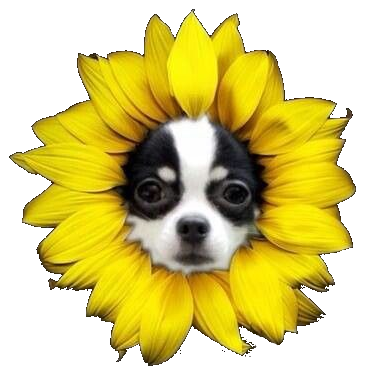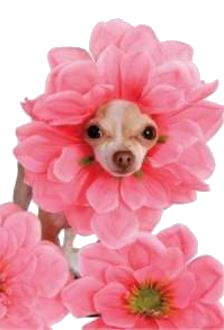
|


 |
iGive.com
Happy Endings Current Events Guest Book |
||
|
Serving the Six New England States |

|
|||
|
|
The ChihuahuaFrom Wikipedia;The Chihuahua is the smallest breed of dog in the world and is named after the state of Chihuahua in Mexico. Breed standards for this dog do not generally specify a height, only a weight and a description of their overall proportions. As a result, height varies more than within many other breeds. Generally, the height ranges between 6 and 10 inches (15 to 25 cm) at the withers. However, some dogs grow as tall as 12 to 15 inches (30 to 35 cm). Both British and American breed standards state that a Chihuahua must weigh no more than 6.0 lb (2.7 kg), however the British standard also states that a weight of 2-4 lb (1-1.8 kg) is preferred and that if two dogs are equally good in type, the more diminutive or smaller is preferred. The Fédération Cynologique Internationale (FCI) standard calls for dogs ideally between 1.5 and 3.0 kg (3.3 to 6.6 lb), although smaller ones are acceptable in the show ring. However, pet-quality Chihuahuas (that is, those bred or purchased as companions rather than show dogs) can, and do, range above these weights, to 10 pounds (4.5 kg), or even more if they have large bone structures or are allowed to become overweight. This does not mean, however, that they are not purebred Chihuahuas, it only means that they do not meet the requirements to enter a conformation show. Oversize Chihuahuas are seen in some of the best, and worst, bloodlines. Typically the breed standard for both the long and short coat Chihuahua will be identical except for the description of the coat. The Kennel Club (UK) and American Kennel Club (USA) only recognize two varieties of Chihuahua: the long-coat and the smooth-coat, also referred to as short-haired. They are genetically the same breed, and are often present in the same litter, though in many kennel clubs, including the KC and AKC, they are judged in separate categories. The term smooth-coat does not mean that the hair is necessarily smooth, as the hair can range from having a velvet touch to a whiskery feeling. Long-haired Chihuahuas are actually smoother to the touch, having soft, fine guard hairs and a downy undercoat, which gives them their fluffy appearance. Unlike many long-haired breeds, short-haired Chihuahuas require no trimming and minimal grooming. Contrary to popular belief, the long-haired breed also typically sheds less than their short-haired counterparts. It may take up to two or more years before a full long-haired coat develops. The AKC Chihuahua standard lists under color: "Any color-Solid, marked or splashed". This allows for all colors from solid blacks to solid whites, spotted, or a variety of other colors and patterns. A few examples are Fawn, Red, Cream, Chocolate, Blue, and Black. However the UK Kennel Club decided in May 2007 not to register puppies with Merle coloration due to the health risks associated with the gene responsible, and in December of that year formally amended the Breed Standard to say "Any colour or mixture of colours but never merle (dapple)." Other countries' Kennel Clubs such as Canada and Australia have also disqualified Merle and a similar change is pending by the AKC. Classifying Chihuahua colors can be complicated due to the large number of possibilities. Examples would be a blue brindle or a chocolate and tan. Colors and patterns can combine and affect each other, resulting in a very high degree of variation. That said, the classic Chihuahua color remains fawn. No color or pattern is considered more valuable than the others. Although blue is considered rare, it is all just a matter of personal preference. Merle coloration is a sort of speckled or dappled effect, and often also affects the eye color of the dog. While the merle appearance is much admired by some, the gene that causes it can also cause blindness and deafness, so to discourage breeding for this color they cannot be registered or shown in some countries. Although words like "teacup", "pocket size", "tiny toy", "miniature", "Mandy" and "standard" have been used to describe different-sized Chihuahuas, the Chihuahua Club of America issued a statement stressing their concern regarding the common usage of such terms. Likewise, statements concerning so-called "deer Chihuahuas," in reference to inherited deer-like ears or bodies in certain animals, are inaccurate as no such breed exists. "Unfortunately, the additional adjectives used to describe the size differences and physical appearances are many and have been misused for so long they now seem legitimate. Teacup, Pocket Size, Tiny Toy, Miniature or Standard - are just a few of the many tags and labels that have been attached to this breed over the years. The Chihuahua Club of America is concerned that these terms may be used to entice prospective buyers into thinking that puppies described in this way are of greater monetary value. They are not and the use of these terms is incorrect and misleading." Chihuahuas are prized for their devotion, ferocity, and personality. Their curious personality and small size make them easily adaptable to a variety of environments, including the city and small apartments. Chihuahuas are often stereotyped as high-strung, though it has been shown that correct training and socialization can result in an outstanding companion animal. They can also be quite affectionate with their owners. Very quick to learn commands, the clever Chihuahua is easily trained to perform tricks. One unique trait in most Chihuahuas is the tendency to "burrow" into blankets or clothing in order to sleep. This can prove a danger if a person sits on a bed or sofa without checking for sleeping dogs. This behavior is attributed to the belief that pre-domesticated Chihuahuas lived in underground burrows. Chihuahuas are not well-suited as small children's pets because of their size, temperament.. It is recommended that children be school aged or older before adding a Chihuahua to one's home. Also, many Chihuahuas focus their devotion on one person, becoming overly jealous of that person's human relationships. This can be mitigated through socialization. Chihuahuas also tend to have a "clannish" nature, often preferring the companionship of other Chihuahuas over other dogs. This breed requires expert veterinary attention in areas such as birthing and dental care. Chihuahuas are also prone to some genetic anomalies, often neurological ones, such as epilepsy and seizure disorders. Chihuahuas, and other toy breeds, are also prone to the sometimes painful disease, hydrocephalus. It is often diagnosed by the puppy having an abnormally large head during the first several months of life, but other symptoms are more noticeable (since "a large head" is such a broad description). Chihuahua puppies exhibiting hydrocephalus usually have patchy skull platelets rather than a solid bone, and typically are lethargic and do not grow at the same pace as their siblings. A true case of hydrocephalus can be diagnosed by a veterinarian, though the prognosis is grim. Chihuahuas have moleras, or a soft spot in their skulls, and they are the only breed of dog to be born with an incomplete skull. The molera does fill in with age, but great care needs to be taken during the first six months until the skull is fully formed. Many veterinarians are not familiar with Chihuahuas as a breed, and mistakenly confuse a molera with hydrocephalus. The Chihuahua Club of America has issued a statement regarding this often deadly misdiagnosis. Chihuahuas can also be at risk for hypoglycemia, or low blood sugar. This is especially dangerous for puppies. Left unattended, hypoglycemia can lead to coma. Chihuahuas are also prone to eye infections due to their large, round, protruding eyes and their relatively low ground clearance. Chihuahuas also have a tendency to tremble but this is not a health issue, rather it takes place when the dog is stressed or excited. One reason for this may be because small dogs have a higher metabolism than larger dogs and therefore dissipate heat faster. Although figures often vary, as with any breed, the average lifespan for a Chihuahua is approximately 8 to 22 years of age. Overfeeding a Chihuahua can be a grave danger to the small dog's health, shortening their life and leading to diabetes. Care must be taken to provide them with adequate nutrition. At the same time, care must be exercised not to overfeed this tiny breed. Overweight Chihuahuas are prone to joint injuries, tracheal collapse, chronic bronchitis, and shortened life span. The developmental history of the Chihuahua is very difficult to trace and is based largely on speculation and theory, however through folklore, legend and archeological finds, there is sufficient evidence to prove that it is without doubt an ancient breed originating from Pre-Columbian Mexico, and it is believed to predate any other breed of dog in the Americas. The most common theory and most likely is that Chihuahuas are descended from the Techichi, a companion dog favoured by the Toltecs and that the modern dog developed through breeding with miniaturized Chinese dogs brought to the Americas by the Spanish Conquistadors .Historical records of the Techichi, which were thought to hunt in packs, can only be traced as far back as the ninth century but it is highly likely that this is the Chihuahua's native Mexican ancestor. Evidence of this is that the remains of dogs closely resembling, but slightly larger than the average Chihuahua have been found in such places as the Great Pyramid of Cholula, which dates back to the 2nd century BC and predates the 16th century. There is also evidence to suggest that the Techichi may also predate the Mayans. After the Toltecs were conquered by the Aztecs, it is believed that this early ancestor of the Chihuahua was adopted as a symbol of the upper classes and it has been suggested that they were used in religious ceremonies for the absolution of sins and to guide the sprits of the dead. In terms of size, the present day Chihuahua is much smaller than its ancestors, a change thought to be due to the introduction of miniaturized Chinese dogs, such as the Chinese Crested Dog, into South America by the Spanish. A progenitor of the breed was reputedly found in 1850 in old ruins near Casas Grandes in the Mexican state of Chihuahua from which the breed gets its name. The state borders with Texas, Arizona and New Mexico where Chihuahuas first rose to prominence and were further developed in the United States. Since that time, the Chihuahua has remained consistently popular as a breed, particularly in America when the breed was first recognized by the American Kennel Club in 1904. Genetic tests place the Chihuahua with other modern breeds originating in the 1800s. The American Kennel Club registered its first Chihuahua in 1905. |
|
||

|

|
|||